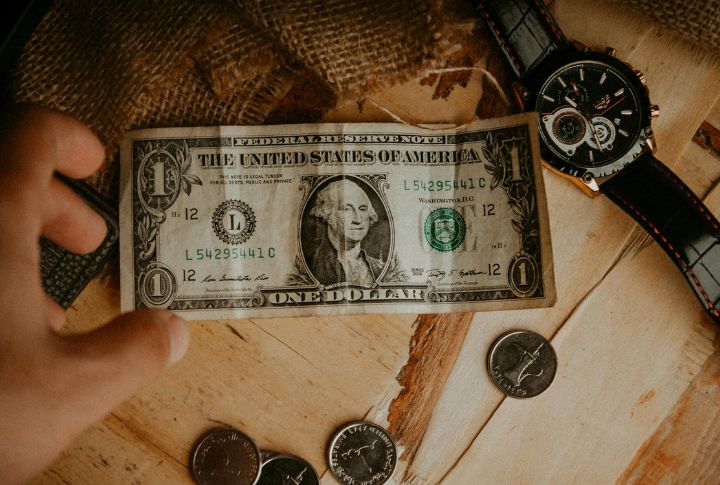
The one-dollar bill passes through countless hands every day, yet most people hardly glance at the details woven into its design. Every mark and symbol has a reason for being there, shaped by ideas that go back centuries. There’s more to it than meets the eye—let’s take a closer look.
The Great Seal’s Front: The Bald Eagle
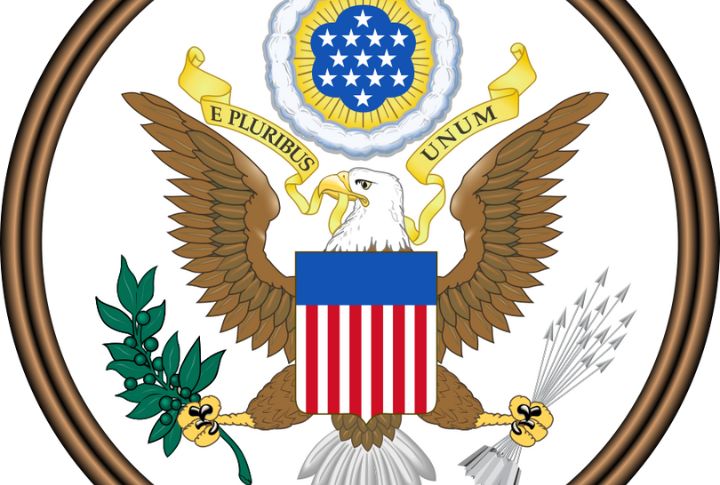
A proud bald eagle clutches an olive branch and arrows, showing the nation’s desire for peace but readiness to defend itself. Above its head, thirteen stars represent the original colonies. The eagle looks toward peace, reinforcing a message of unity through strength and thoughtful diplomacy.
The Great Seal’s Back: The Pyramid
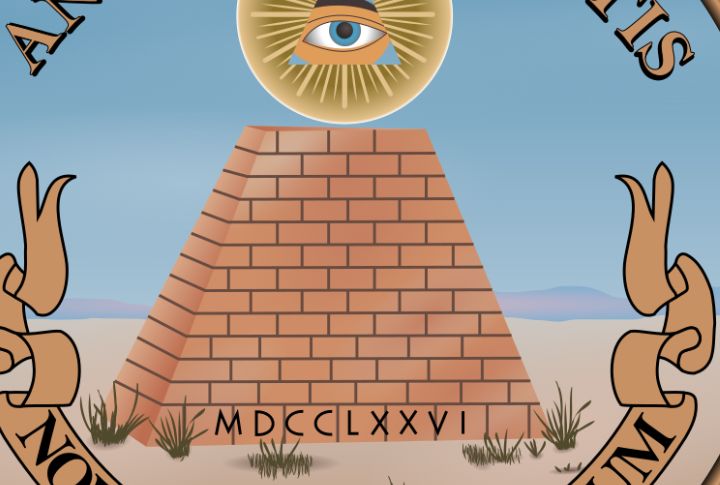
On the left, an unfinished pyramid symbolizes strength and the country’s potential for growth. Its thirteen steps nod to the founding colonies. Floating above is the all-seeing eye, placed deliberately apart to draw attention. Together, these shapes form one of the most recognized icons in US currency.
Eye Of Providence
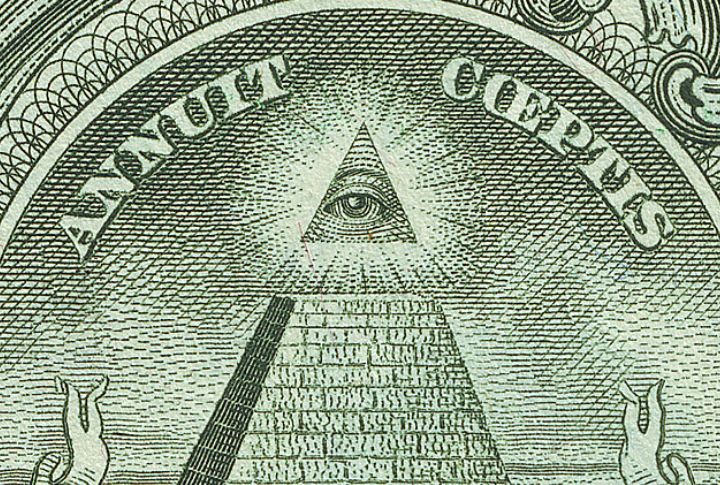
That floating eye over the pyramid often sparks curiosity. Known as the Eye of Providence, it reflects the idea that a higher power watches over the country. Though frequently linked to conspiracy theories, it originally represented enlightenment, divine oversight, and trust in a moral order during the nation’s founding.
Annuit Cœptis
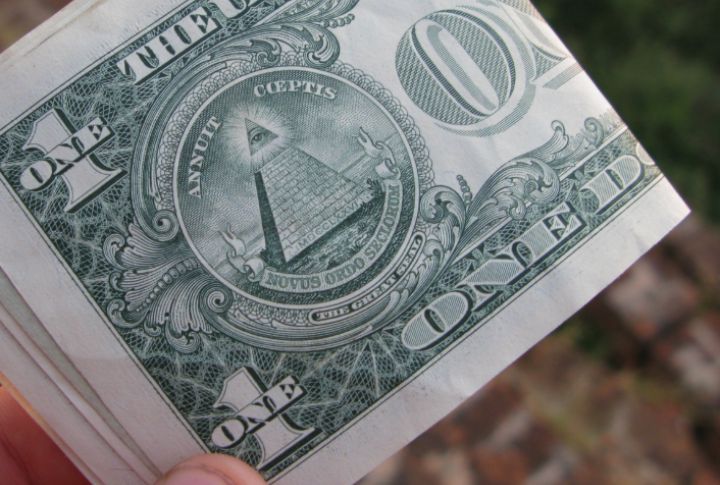
This Latin phrase above the pyramid means “He has favored our undertakings.” It refers to the belief that a higher power supported the creation of the United States. Rather than a casual motto, it was chosen to reflect the gravity and faith tied to the country’s founding.
Novus Ordo Seclorum
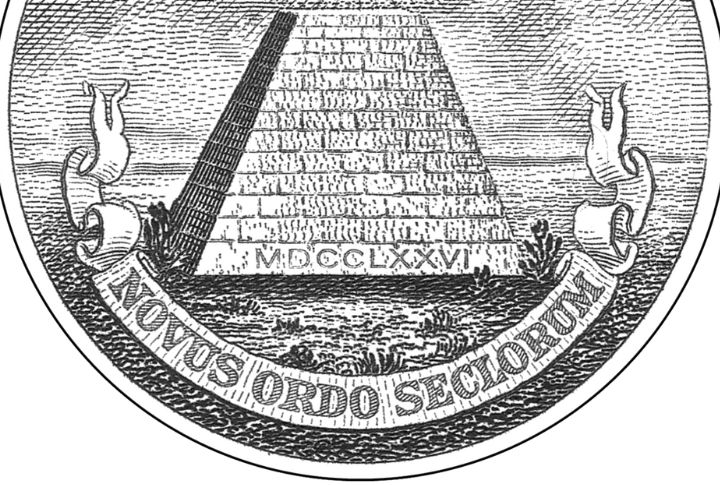
Below the pyramid, this line translates to “A new order of the ages.” It celebrates the birth of a new era marked by the founding of the US in 1776. The phrase was meant to inspire a sense of lasting change, not global domination, as myths have claimed.
Thirteen Stars With Arrows And Leaves

The number thirteen appears repeatedly on the bill, in stars, arrows, leaves, and layers. This is because the United States started with thirteen colonies, and early designers wanted to ensure that the legacy was front and center in the country’s most widely used note.
George Washington’s Portrait
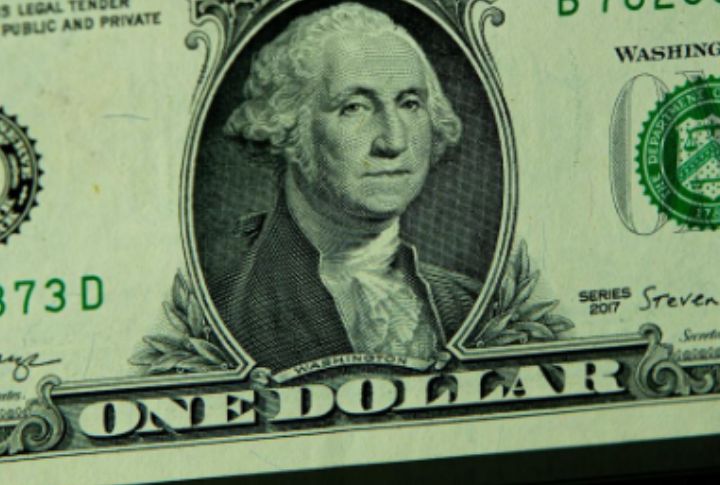
Familiar and steady, Washington’s portrait anchors the front of the bill with a sense of continuity. Since 1929, the image has remained nearly identical. That consistency helps people recognize genuine notes quickly and makes even subtle fakes easier to detect over time.
E Pluribus Unum
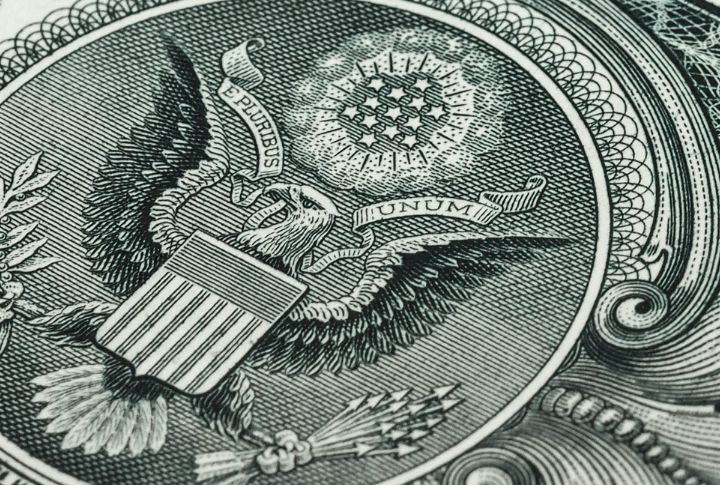
This Latin phrase sits on a scroll in the eagle’s beak and means “Out of many, one.” It points to the unity formed from the original states. Even now, it reflects how a collection of diverse states, people, and ideas can come together to form something stable and enduring.
Shield On The Eagle’s Chest
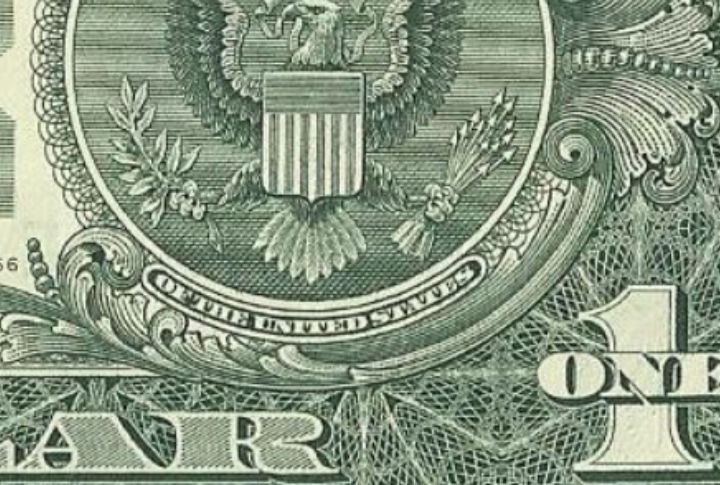
A shield covers the eagle’s chest but lacks any support beneath it; that’s on purpose. It represents the idea that the United States is independent and not reliant on outside rulers or influences. The vertical stripes represent the states, while the horizontal bar above represents Congress.
Thirteen Arrows In One Talon
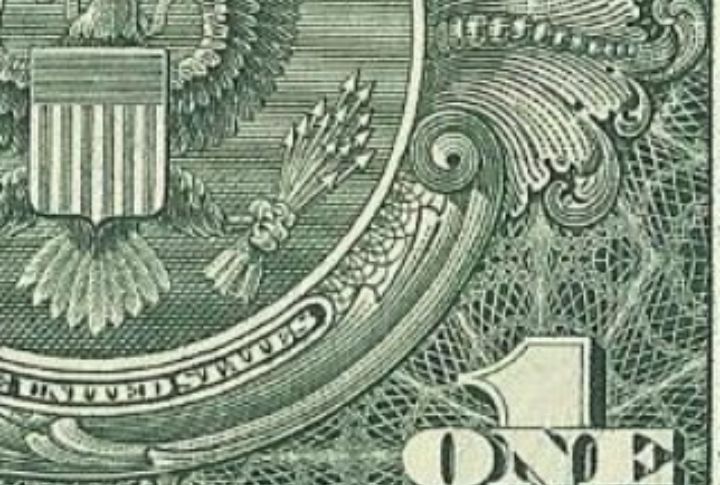
In its left talon, the eagle clutches thirteen arrows. They’re not there to look fierce—they symbolize readiness. The number ties back to the foundational colonies, but the message is simple: the United States prefers peace yet stays prepared to defend itself when necessary.
Olive Branch In The Other Talon
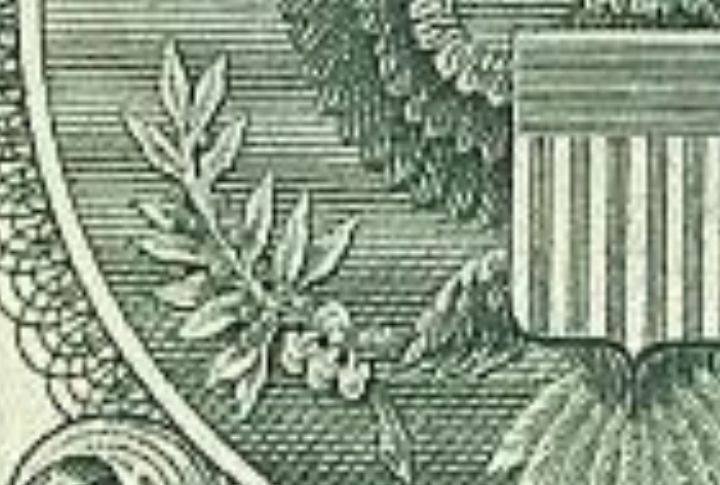
Gripped in the eagle’s right talon is an olive branch. This ancient symbol of peace contrasts with the arrows. It is not merely decorative; the positioning says something, too. The eagle faces the olive branch, not the arrows, a subtle message that peace remains the first choice, not the fallback.
The Glory Burst
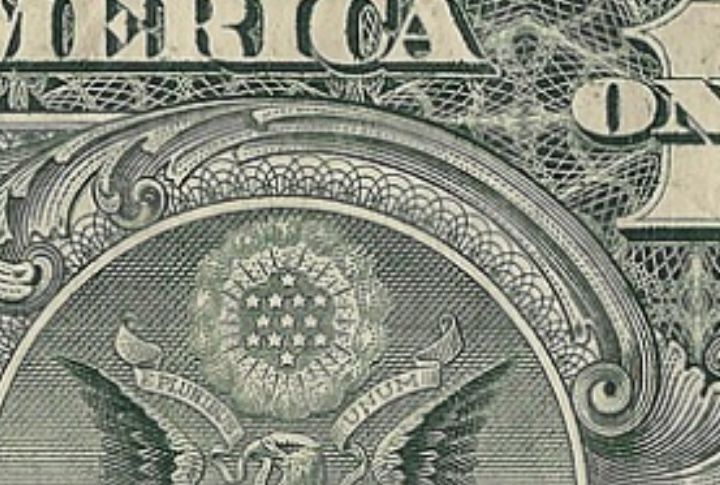
Above the eagle’s head is a burst of light surrounding thirteen stars arranged in a six-pointed star shape. This design reflects careful planning and balance. Every point and ray reinforces the message of national unity while fitting neatly into the compact layout of the bill’s reverse side.
Latin Numerals MDCCLXXVI
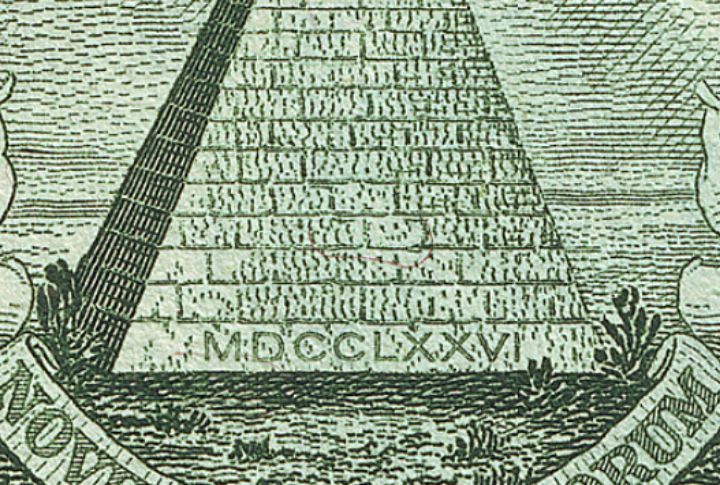
At the base of the pyramid is a Roman numeral: MDCCLXXVI. That’s 1776, the year the Declaration of Independence was signed. This date anchors the pyramid’s symbolism, linking the country’s foundation with both historical fact and the beginning of a new political experiment.
The Treasury Seal
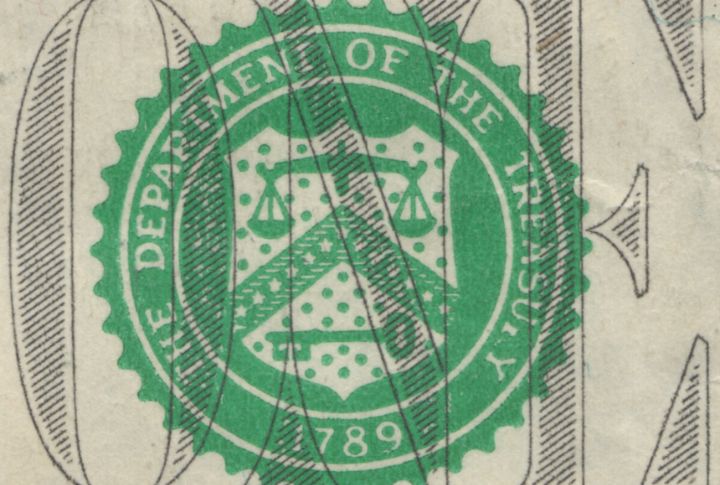
A green seal with a key, scales, and chevron marks the US Department of the Treasury. The key stands for trust and authority, the scales for justice, and the chevron’s thirteen stars connect it back to the colonies. It signals the bill’s authenticity and official origin.
The Federal Reserve Seal
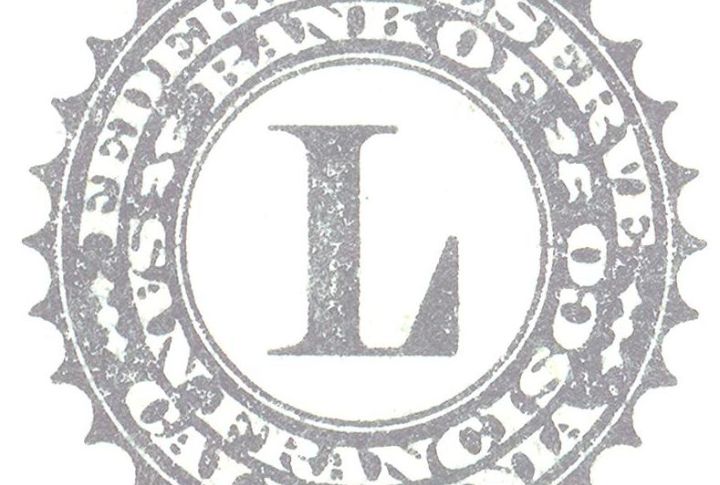
Next to George Washington is a black seal identifying the issuing Federal Reserve Bank. Each bank is numbered and marked with a letter from A to L. This seal helps track where the note was printed and adds another layer of traceability to the money supply.
Serial Numbers
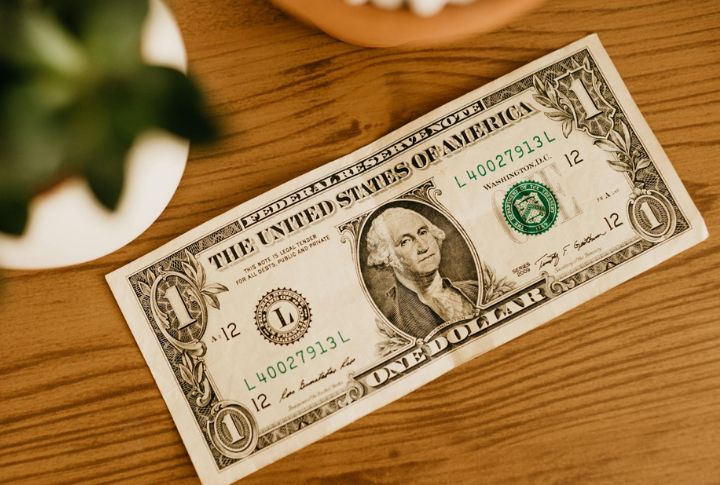
Green serial numbers appear twice on the front of the bill, always matching. These aren’t random—they’re tied to the note’s series, the issuing Federal Reserve Bank, and the overall batch. If those numbers don’t match or appear out of place, the bill might not be the real deal.
Series Year
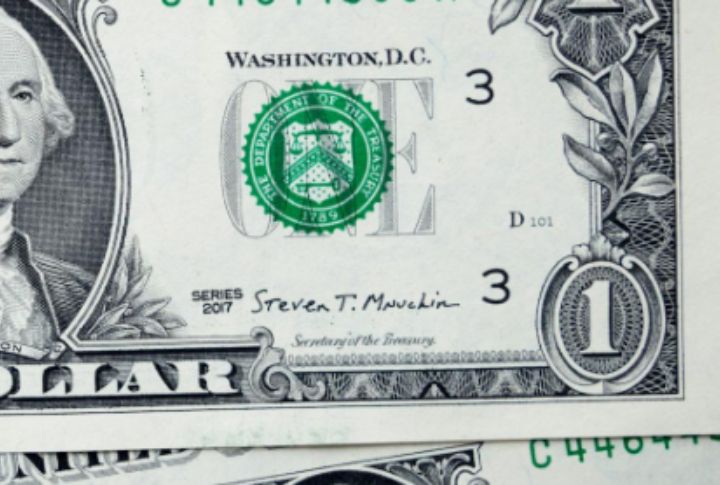
The year printed next to the Treasury Secretary’s name is more than a date—it indicates when that design version was approved. This label updates if a new official signs the bill or a security feature is added. It doesn’t mean the bill was printed in that exact year.
Typography And Denomination Markings
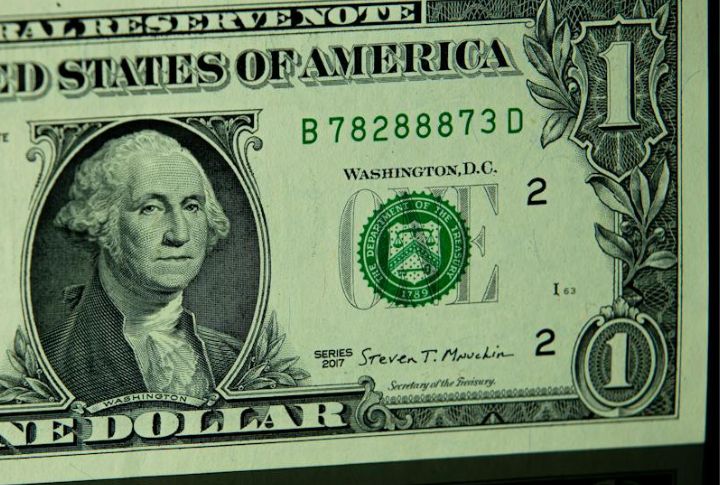
The word “ONE” appears in bold, decorative fonts across the back, paired with the printed “ONE DOLLAR” on the front. These distinct typographic choices make the bill instantly recognizable. The serif styles and symmetrical layout ensure legibility in daily use and across automated systems worldwide.
Green Ink And Intaglio Printing
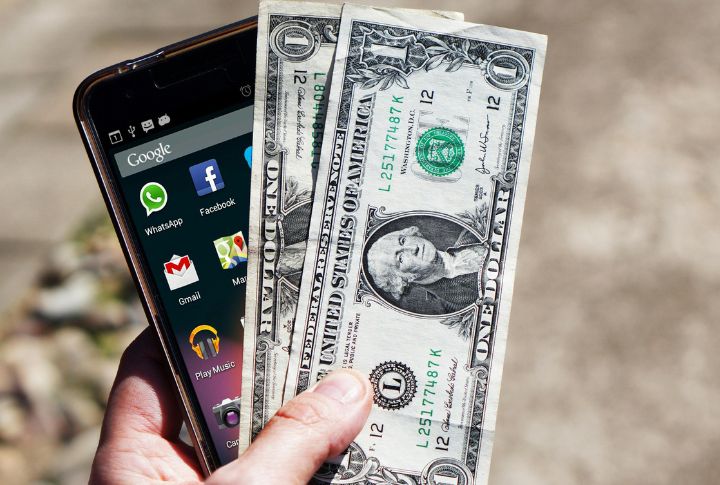
That rich green ink used on the front isn’t just about color. It resists fading and chemical changes, helping prevent fraudulent reproduction. The raised texture you feel comes from intaglio printing, a process that presses ink into the paper for sharp, detailed lines that are tough to fake or duplicate.
Paper Composition
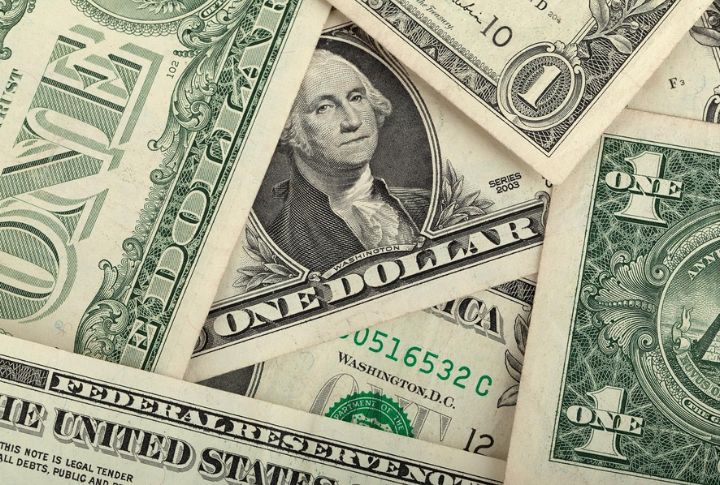
It might look like regular paper, but US currency uses a special blend of 75% cotton and 25% linen. Red and blue fibers are woven into the mix. That texture is durable, designed to withstand years of handling and folding.

